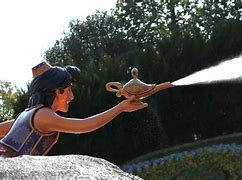
Jakarta Terminal 3 Map
Ground transportation
--Pilih Tenant-- ABLE EXCHANGE & REMITTANCE ACAII TEA ADIDAS AIGNER ALAND ANGGREK BUSANA ANTA VAYA ANTARASA APTOWN HAIR FRONTIER ARABICA COFFEE ASICS ATM BANK DANAMON ATM BNI ATM BRI ATM BTN ATM CIMB NIAGA ATM HSBC ATM OCBC NISP ATM PANIN ATM PERMATA BANK AUNTIE ANNE'S BAG'S CITY BAIA NONNA BAKERZIN INDONESIA BAKMI GM BAKPAU A-SATU BALENO BANBAN BANK MANDIRI DIGITAL LOUNGE BANK SINARMAS BAR.B.Q PLAZA BASEUS BASKIN ROBBINS BASO AFUNG BEARD PAPA BEATRICE QUARTERS BEAUTY SPACE BLP BEE CHENG HIANG BEN GONG'S TEA BERMVDA COFFEE BERSHKA BIRKENSTOCK & STACCATO BLI BLI BLUU SHAAK BOOST JUICE BARS BOOTS BRIDGES EYEWEAR BURGER KING C BAKES C&F PERFUMERY CALVIN KLEIN CARAMELLO CASIO CELEBRITY FITNESS CENTURY HEALTHCARE CGV CHARLES & KEITH CHATERAISE CHATIME CHATIME ATEALIER CHICCO X RECARO CHOCOCHIPS CHRISTOPHER COIFFURE CIMB NIAGA DIGITAL LOUNGE COLD WEAR COTTON ON COTTON ON KIDS COWAY CROCS CUPBOB D'CREPES DAIRY QUEEN DE HAIR DIAMOND & CO DIMPOT DIOR COSMETICS DJI DOUBLE R HAIR STUDIO DOUGH LAB DR. BRONNER'S DRAGON HOT POT DRAGON N COW DWIDAYA TOUR DYNAMIC BAKERY EARLY LEARNING CENTRE (ELC) ENDORPHINS ERAFONE ERHA DERMATOLOGY ESTEE LAUDER EUDORA EXCELSO FAMOUS AMOS FIN'S RECIPE FIPPER FOCUS NUSANTARA FOEK LAM FOOT LOCKER FORE COFFEE
To make sure to access the checkout page, you must allow your location in the browser.
Online order available: Free shipping and returns, Secure Payment, Exclusive online services
International terminal in Banten, Indonesia
Soekarno–Hatta International Airport Terminal 3 is a terminal of Soekarno–Hatta International Airport serving Greater Jakarta, Indonesia. It is located on northeast side of the airport. Terminal 3 has a different style to other terminals of the airport. Terminal 1 and 2 were built with incorporation of the local Javanese architecture into the design, but Terminal 3 is built in contemporary modern design with a degree of environmental friendly and traditional sense. The terminal was first named as Terminal 3 Ultimate before it was renamed simply as Terminal 3.
Garuda Indonesia Group airlines, including Garuda Indonesia and Citilink, operate all of its flights from this terminal. Most foreign airlines and several local airlines serving the airport also fly from this terminal.[1][2] In 2017, the terminal was named as the best airport terminal in Indonesia at the ninth Bandara Awards initiated by Majalah Bandara.[3]
The former Terminal 3 was officially opened for commercial flights when Mandala Airlines and Indonesia AirAsia started operations in T3 for their domestic flights on 20 April 2009 followed by international flights on 15 November 2011. The old Terminal 3 had a capacity of 4 million passengers per annum, 30 check-in counters, 6 baggage carousels and 3 gates with two jet bridges. In 2012, Angkasa Pura II, the airport operator, undertook a master plan to upgrade Soekarno-Hatta International airport into a world class airport and ultimately build an Aerotropolis.[4] The expansion of Terminal 3 is part of the masterplan.[5][6] Terminal 3 was initially projected to serve 60 airplanes.[7]
The new Terminal 3 officially opened for commercial aviation on 9 August 2016 at midnight stroke of WIB.[8] At first, the new T3 had no link with the old T3 building. The old T3 is now renovated and connections between the new and old terminals have been built.[9] Airlines that belonged to SkyTeam alliance gradually moved from T2 to the new T3, starting with Garuda Indonesia on 1 May 2017, Saudia on 10 July, Vietnam Airlines on 12 July, Korean Air on 17 July, and XiamenAir on 30 July, respectively.[10][11] It was later announced that in December 2017, all international flights will be using the new T3.[12]
Terminal 3 is 1.2 kilometres long and the apron is able to serve 40 aircraft.[6] The terminal has the capacity to serve 25 million international passengers each year.[13] It was designed to cater as a transit point for international airlines. Spanning 422,804 square metres, the new terminal is slightly larger than Changi Airport's Terminal 3. It has 10 gates for international flights and 18 for domestic, 206 check-in counters, 38 self check-in and 12 bag drop counters, 59 aerobridges, four-star hotels, meeting rooms, duty-free shops, retail outlets, restaurants and multi-storey carparks.[14] Total area of the main building is about 331,101 square metres, the parking building 85,578 square meters and the VVIP building 6,124 square metres. The check-in area of the terminal is arranged in eight clusters. The terminal has an automated baggage handling system featuring at least 13 conveyor belts.[15] The parking area can accommodate 2,600 cars and 2,600 motorcycles.[16]
Terminal 3 is equipped with BHS level 5 to detect explosives and directly move them into security blankets, an Airport Security System (ASS) which can control up to 600 CCTVs to detect faces who are available in the security register. The terminal also has "Intelligence Building Management System" (IBMS) which can control uses of water and electricity, rain water system to produce clean water from rain, a recycled water system to produce flushing water from used toilet water, and illumination technology control to illuminate the terminal depending on the weather surrounding the terminal.[17]
Terminal 3 has WiFi access. The terminal has a Tourist Information Center (TIC) from where tourists may get information on tourist attractions, transportation, accommodation and other travel related information in Indonesia.[18]
Hotel and co-working space
There is a premium co-working space named as APSpace in the terminal. The co-working space has serviced offices, meeting rooms, event spaces, business lounges, high speed internet. and sleeping pods which is supported by advanced technologies.[19]
Terminal 3 also has a Digital Airport Hotel or capsule hotel with 120 rooms, which has Alpha-type and Beta-type rooms.[20]
A 4-star hotel, Anara Hotel, opened in 2020.
The commercial area of Terminal 3 covers an area of 71,225 square metres. This area is divided into several zones: food & beverages with an area of 23,301 square metres, retail 22,023 square meters, servicing 2,007 square metres, duty free 4,784 square metres, lounge 8,496 square metres, exhibition 1,493 square metres, and airline offices 19,121 square metres.[21]
Immigration facilities
As the terminal is extensively used for international flights, it has a large passport control hall, with staffed booths (for all passports) and autogates (for all Indonesian and eligible foreign passports).[22] There is also a visa-on-arrival facility for eligible visitors before passport control.[23]
Since its opening, the terminal has been plagued with numerous problems, ranging from long baggage wait times, insufficient and unsafe lighting, lack of proper signage, as well as having its car parks experience near continuous traffic jams.[24][25]
It also faced multiple criticisms on its design. The constructed terminal deviated considerably from the original design proposed by Woodhead Associates,[26] eliciting allegations that the contractors were cutting corners. The perceived lack of attention to the terminal's aesthetics has also led to criticisms. In 2022, the Minister of State-Owned Enterprises Erick Thohir publicly lamented the poor quality of the terminal's carpets.[27]
Another common complaint is the poor structuring of the terminal with long distances to gates and a lack of sufficiently-fast travelators.[28] The terminal is also not well-catered for handling international transit passengers.[29]
Terminal 3 is the airport's newest and largest terminal. This terminal is used as a hub for Garuda Indonesia and Citilink as well as Pelita Air and TransNusa. Here is the list of airlines currently and formerly serving the terminal.
Inter-terminal transfer
Inter-terminal transfer is available on the landside (before security). Free shuttle buses between terminals 1, 2 and 3 are available. The Skytrain people mover system also connects all terminals. The headway of the Skytrain is 5 minutes, with 7 minutes needed to transfer from Terminal 1 to Terminal 3.[30] There is no inter-terminal transfer options in the transit area/airside.
Bus services including the state-owned Perum DAMRI and other private companies provide services from the airport to various destinations in Greater Jakarta and other adjacent areas.[31] The buses operate from 06.00 to 23.00.
The Soekarno-Hatta Airport Rail Link is connected through the Skytrain system. The railway service connects the airport to the city centre of Jakarta.[32]
To make sure to access the checkout page, you must allow your location in the browser.
Online order available: Free shipping and returns, Secure Payment, Exclusive online services
To make sure to access the checkout page, you must allow your location in the browser.
Online order available: Free shipping and returns, Secure Payment, Exclusive online services
Although the Dutch were the first to attempt to plan the city, the city layout is probably more British than Dutch in character, as can be seen from such large squares as Medan Merdeka (“Freedom Field”) and Lapangan Banteng (meaning “place of the gaur [large wild ox]”). The Oriental style, or “indische” style, as the Dutch call it, is apparent not only in the city’s way of life but also in the types of houses, the wide, tree-lined streets, and the original spacious gardens and house lots. In Kebayoran, a satellite town built since World War II on the southwestern side of the city, and in other modern developments, the houses and garden lots are much smaller than in the older colonial districts.
Countries and Capitals Quiz
Jakarta has long been a city of new settlers who assimilated local ways and became Jakartans themselves. Some traditional neighbourhoods can, however, be identified. The Kota (“City”; also called Kota Tua [“Old City”] or Old Batavia) area, sometimes called the downtown section, is the historical city centre, and it houses a significant part of the Chinese population. The contemporary city’s business and financial hub lies somewhat to the south of Kota, primarily along Jenderal Sudirman and Mohammad Husni Thamrin roads, in central Jakarta. The area of Kemayoran (“Progress”) and Senen, originally on the eastern fringe of the city, is now almost central in its location and increasingly has become the city’s major retail area. The Jatinegara (“Real Country”) section, originally a Sundanese settlement but later incorporated as a separate town, then a Dutch army camp (Meester Cornelis), is now merged with the rest of Jakarta and includes many new settlers. The Menteng and Gondangdia sections were formerly fashionable residential areas near the central Medan Merdeka (then called Weltevreden). To the west, Tanah Abang (“Red Earth”) and Jati Petamburan are, like Kemayoran, densely developed. Tanjung Priok is the harbour, with its own community attached to it.
The most common type of house in the city is the kampong, or village, house; most such houses are built of materials such as wood or bamboo mats, but this does not necessarily mean that they are substandard. Another common type of housing, often used to house government workers, is the colonial urban house, or rumah gedongan; such houses are mostly single-family detached or semidetached, each standing on a separate lot. Apartment buildings constitute a more modern category; although they are more economical in the use of land than single-family types, their architectural and construction costs often make them fairly expensive. Housing is generally overcrowded.
Some of Jakarta’s buildings, such as the Portuguese Church (1695) in Kota, are of architectural or historical interest. Some of the buildings around the city square in Kota also date from colonial times, including the old city hall (1710), which has been restored and now serves as the municipal museum. The National Archives building was originally the palace of a Dutch governor-general, Abraham van Riebeeck. The Ministry of Finance building, facing Lapangan Banteng, also was designed as a governor’s palace (Herman Willem Daendels, one of Napoleon’s marshals). The Presidential Palace, north of Medan Merdeka, faces Monas, or Monumen Nasional (National Monument). The Istiqlal Mosque, in the northeast corner of Medan Merdeka opposite Lapangan Banteng, is one of the largest mosques in Southeast Asia. The National Museum (formerly the Central Museum), on the west side of Medan Merdeka, houses a collection of historical, cultural, and artistic artifacts.
After World War II Jakarta underwent a building boom. The Hotel Indonesia (the city’s first high-rise building) and the Senayan Sports Complex were built for the Asian Games in 1962. Most high-rise buildings are located in the city’s financial centre.
Jepara bumi kartini, kemanapun aku pergi, pasti pulang kepelukanmu. Kangen pasti ada, meskipun orang lain bilang JEPARA itu kota kecil



